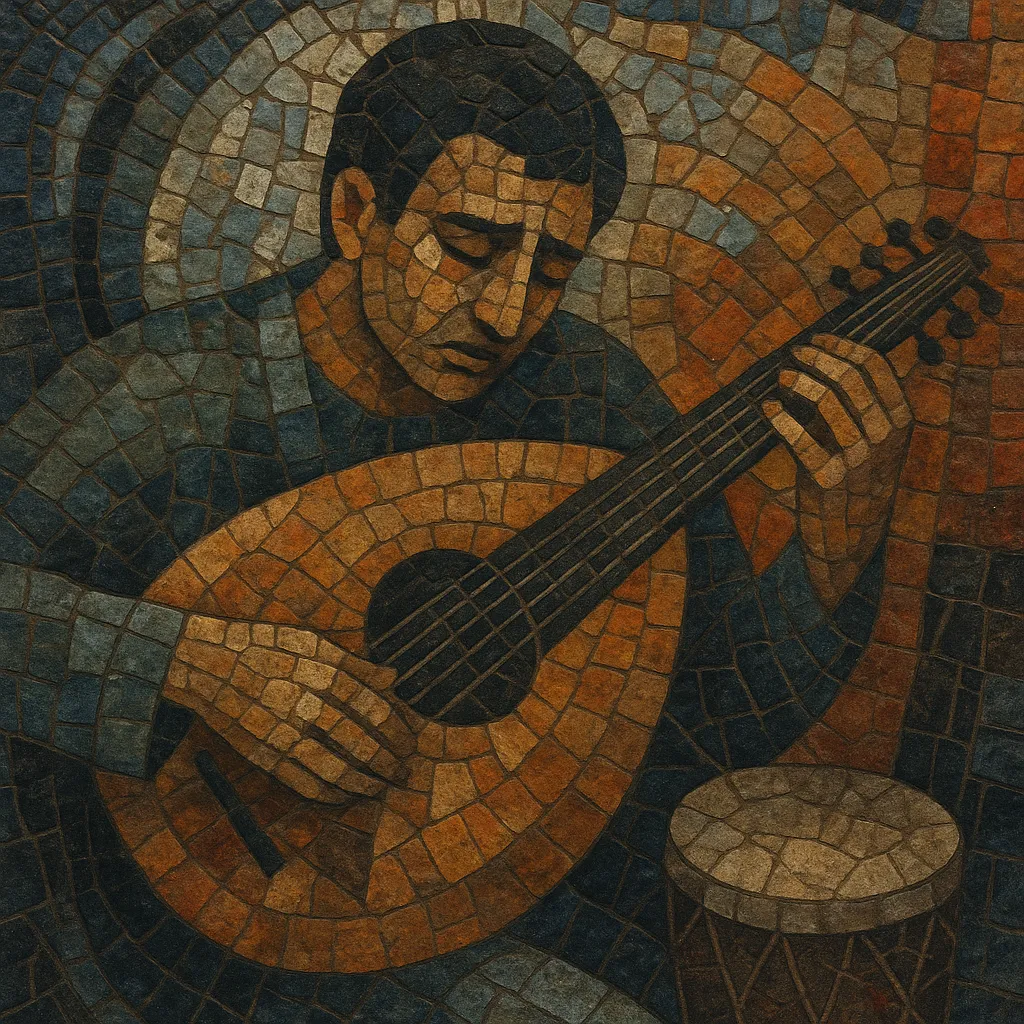Muzikat dika'on (literally “depression music” in Hebrew) is a melancholic strand of Israeli Mizrahi/Mediterranean song that crystallized in the 1970s cassette era and reached wide visibility in the early 1980s. It blends Arabic maqam-based melodies, Greek laïko sentiment, and Turkish arabesk pathos with Hebrew lyrics and Mizrahi vocal delivery.
Characterized by minor modes, expressive melisma, microtonal inflections, and slow to mid-tempo grooves, the style often features oud or bouzouki alongside electric guitar, string pads, darbuka/riqq percussion, and budget keyboards. The production aesthetic historically leaned toward tape saturation, spring reverbs, and market-stall cassette duplication.
Lyrically, the songs dwell on heartbreak, longing, exile, social marginalization, and fate. The result is an intimate, emotionally direct pop-ballad idiom that became a powerful voice for Israel’s Mizrahi communities.
Muzikat dika'on emerged within Israel’s growing Mizrahi musical sphere as a distinctly melancholic current. Rooted in Arabic maqam practice brought by Jewish communities from the Middle East and North Africa, and colored by Greek laïko and Turkish arabesk, it took shape in local neighborhoods and markets. Early practitioners recorded on low-budget setups and circulated their music via cassettes, bypassing institutions that were reluctant to program Mizrahi sounds.
Street markets and bus stations became hubs for “depression songs,” with vocalists and bandleaders developing a recognizable sound: slow minor-key ballads, melismatic vocals, and ornamented instrumental lines over darbuka-driven rhythms. The cassette economy accelerated word-of-mouth success and helped launch stars who articulated themes of heartbreak and social struggle. By the early 1980s, hits from leading singers crossed into the national mainstream, reframing Mizrahi expression as central to Israeli popular music.
As studios modernized, arrangements added polished string sections, synth pads, and electric guitars that still bent and slid to microtonal targets. While later Mizrahi pop diversified toward dancefloor tempos and glossy production, the emotional template and vocal style of muzikat dika'on remained a touchstone. Contemporary ballads across Israeli Mediterranean pop continue to draw on its modes, ornaments, and lyrical candor.


